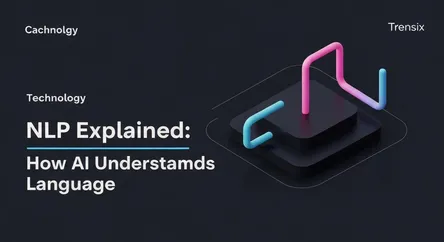Technology
NLP Explained: How AI Understands Language

Explore Natural Language Processing (NLP), the AI field that enables computers to understand, interpret, and generate human language like we do.
What is it?
Natural Language Processing (NLP) is a branch of artificial intelligence (AI) that focuses on enabling computers to understand, interpret, and generate human language. It combines computational linguistics with statistical, machine learning, and deep learning models. Through NLP, machines can process human language from text or voice data, comprehend its full meaning, and respond in a way that's both intelligent and useful. Key applications include language translation, sentiment analysis, spam detection, and conversational chatbots.
Why is it trending?
The recent surge in NLP's popularity is driven by the explosion of digital data and significant advancements in computational power and algorithms. Deep learning models, particularly transformers, have revolutionized the field, allowing for unprecedented accuracy in language tasks. This has enabled the development of sophisticated applications like advanced voice assistants (Siri, Google Assistant), powerful search engines that understand user intent, and real-time translation services that break down communication barriers.
How does it affect people?
NLP is deeply integrated into daily life, often invisibly. It powers the autocorrect and predictive text on your smartphone, filters spam from your email inbox, and allows you to talk to your smart home devices. In business, it analyzes customer reviews to improve products and services. For individuals, it makes technology more accessible and intuitive, changing how we search for information, communicate with others across the globe, and interact with the digital world around us.